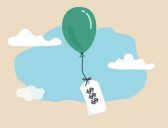Getting a large credit card bill – whether anticipated or not – can be alarming. However, paying down a large credit card bill can be easier than you think. It just takes a solid, realistic plan and a dedication to budgeting.
Minimizing growing credit card debt
Large or growing credit card debt can be detrimental to your finances in multiple ways. For one, carrying a large balance could negatively affect your credit score, especially if you’re having trouble keeping up with payments. A large amount of credit card debt can also impact your finances for years due to interest accrual. Credit cards can carry high interest rates, and if you only make minimum payments, that interest accrual can increase your debt exponentially.
The first step in minimizing your credit card debt is creating a solid financial plan. Here are a few things you can do to start reducing your debt:
- Conduct an audit to determine how you got into credit card debt and curate a budget that will allow you to limit unnecessary spending.
- If you can, make more than just the minimum payment amount. This will allow you to pay off your debt faster, and it can reduce interest accrual.
- Refinance your loan using a debt consolidation loan, balance transfer card or HELOC to take advantage of lower interest rates.
Minimizing credit card debt is all about limiting interest accrual, so any steps that you can take to stop your interest from growing can help you pay down credit card debt faster.
Refinancing options
When it comes to refinancing your credit card debt, it’s important to remember that you’re not paying off your debt, you’re just shifting it around. However, certain types of refinancing could make paying off large amounts of debt more manageable. Below are some examples of how you can pay off your debt through refinancing.
Debt consolidation loan
If you have multiple lines of high interest credit card debt, consider a debt consolidation loan. A debt consolidation loan is a type of personal loan that gives you a lump sum to pay off your existing debts. You’ll then pay off the loan with a fixed interest rate over a set repayment period. These interest rates are typically lower than the rates on credit cards.
Credit card refinancing
Credit card refinancing – also known as a balance transfer – can be a useful tool in lowering your interest rate. When you conduct a balance transfer, you shift your debt from one credit card to another, ideally to take advantage of a lower interest rate. Most balance transfer credit cards will have a zero-interest introductory period that typically lasts from 12 to 21 months.
While the 0 percent introductory rate can help you save thousands in interest charges, if you can’t pay off your balance by the end of the introductory period, you’ll likely get hit with a much higher interest rate – so establish a plan to pay down your balance by the end of the introductory period.
Cash-out refinance
You can also pay off a hefty credit card bill using a cash-out refinance. A cash-out refinance is when your mortgage is replaced with a new loan for more than what you owe. The difference between the two is given to you in cash and can be used to pay down high-interest credit card debt.
This option only makes sense if you’ll be able to decrease the interest rate on your mortgage and you plan to use all of the funds from the cash-out refinance toward your credit card bills. If you’ve been considering refinancing for a while, now could be a good time, as 15-year fixed-rate refinance rates are incredibly low.
Home equity line of credit (HELOC)
HELOCs typically offer lower interest rates than credit cards and can be a useful way to consolidate your high-interest debt. A HELOC allows you to tap into the existing equity of your home with a revolving line of credit – so you can take out money as you need it.
While HELOCs do allow you to pay down your credit card debt all at once, there are some drawbacks. HELOCs are secured by your home, so if you fail to make the monthly payments on time, you run the risk of foreclosure. As with credit cards, it’s also easy to overborrow from HELOC, since you don’t have to make payments until your draw period ends. Because of this, it’s wise to only tap the amount you need to pay off your credit card debt and try to make payments on your HELOC before you officially enter the repayment period.
The bottom line
When it comes to large credit card debt, remember that you have options. While it is easier to fall into debt than it is to get out of it, it’s not impossible to pay down credit card debt quickly.
The key to paying down debt is to find a strategy that works for you and sticking with it. But before making a decision, conduct an audit of your finances or consult with a trusted financial adviser. No matter which method you choose to pay off large credit card debt, your decision should be one that will positively impact your credit score and won’t leave you with more debt down the road.
The post Best ways to pay a large credit card bill appeared first on Bankrate and is written by Hanneh Gundersen
Original source: Bankrate






